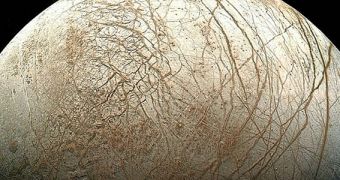Officials with the American space agency are interested in developing an exploration mission targeted at the Jovian moon Europa that would cost less than $1 billion (€720 million). Over the past few years, Mars has remained a priority for planetary exploration at NASA, regardless of the emphasis placed on Europa by the last decadal survey from the US National Research Council.
Exploring Europa is not the easiest thing to do. A potential mission to the icy moon would not benefit from the same political and financial support in the United States as putting a rover on Mars would. Additionally, such an effort would be more technologically and scientifically complex.
Even so, paying $1 billion for a mission to Europa would be cheap, considering that building and launching the Mars Science Laboratory (MSL) rover Curiosity set the space agency back around $2.5 billion (€1.8 billion). The James Webb Space Telescope will cost $8 billion (€5.8 billion) by 2018.
Even though NASA has not requested any funds for exploring Europa over the past few years, the Congress allotted $43 million (€31 million) for this purpose last year and an additional $80 million (€57.6 million) in 2014, Nature News reports.
The White House's 2015 NASA budget request includes a proposal for allotting an extra $15 million (€10.8 million) to exploring the Jovian moon. This funding level would be much lower than needed to actually make meaningful progress, but it does represent a good start.
“If nothing else, we're excited to see NASA and the White House put it into budget lines and acknowledge it’s an important destination,” explains the director of advocacy at the Planetary Society, Casey Dreier. The organization promotes planetary and solar exploration.
A discovery made via the Hubble Space Telescope last December may have had something to do with this proposal. At the time, the observatory established the presence of plumes of water and organic molecules coming out of Europa. These structures are similar to the jets found on Saturn's moon Enceladus.
“The fact that it's in there is a big, big shift, and I think a big part of that is the discovery of those plumes,” Dreier explains. A potential mission to Europa, no matter how cheap, would most likely aim to study these plumes in great detail, which would reveal important information about the hypothesized liquid ocean underneath.
“The big question that ultimately drives us to study Europa is ‘Does life exist there?’ I think most of us had imagined that two or three large and expensive Europa missions would be needed before we find a clear answer to this compelling question, including future landers and deep-drilling devices,” explains Southwest Research Institute (SwRI) expert Kurt Retherford.

 14 DAY TRIAL //
14 DAY TRIAL //